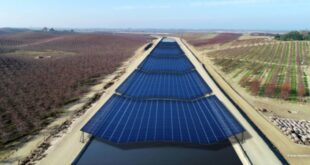With the California drought at its peak, water gurus are beginning to discuss the possibility of potable reuse to help aid the state’s water crisis. Potable reuse is recycled water, where sewage water is treated and purified so it can be utilized as drinking water.
Other cities and states that are in a serious drought, similar to California, have already begun implementing the treatment of potable reuse water. Cities, like Big Springs and Wichita Falls, Texas, began using potable reuse water because their evaporation rates exceed their annual rainfall.
One water filtration technique, known as indirect potable reuse, which was proposed in 2000, would purify underground sewage water into an underground reservoir. Heavy critics in the Los Angeles area labeled the proposal “toilet to tap,” a name that eventually stuck.
Although long-time critics want nothing to do with potable reuse, California water managers and environmentalists believe this could be a smart move to help alleviate some of the state’s problems stemming from the California drought, especially in urban areas, like Los Angeles.
“You know, toilet to tap might be the only answer at this point,” activist Donald Schultz told The Los Angeles Times. “I don’t support it, but we’re running out of options. In fact, we may have already run out of options.”
If Californians ever agree to direct potable reuse systems, it could be up to a decade before they are operational. A panel of experts is preparing a report for the California Legislature on the feasibility of creating a system, which is due in 2016.
According to a report by George Tchobanoglous, water expert and professor emeritus at UC Davis, “by 2020, potable reuse could yield up to 1.1 million acre-feet of water annually – somewhat less than the 1.3 million acre-feet of water the governor hopes to save through mandatory reductions, and enough to supply 8 million Californians, or one-fifth of the state’s projected population.”
One of the biggest concerns opponents have is the potential for water contaminants. No government agency regulates the process for removing contaminants because there is little scientific knowledge regarding the process.
Proponents of potable reuse water believe that contaminants make up such a small percentage of the drinkable water that they pose little to no risk for the consumer.
 California Water News Daily Your Source For Water News in California
California Water News Daily Your Source For Water News in California


